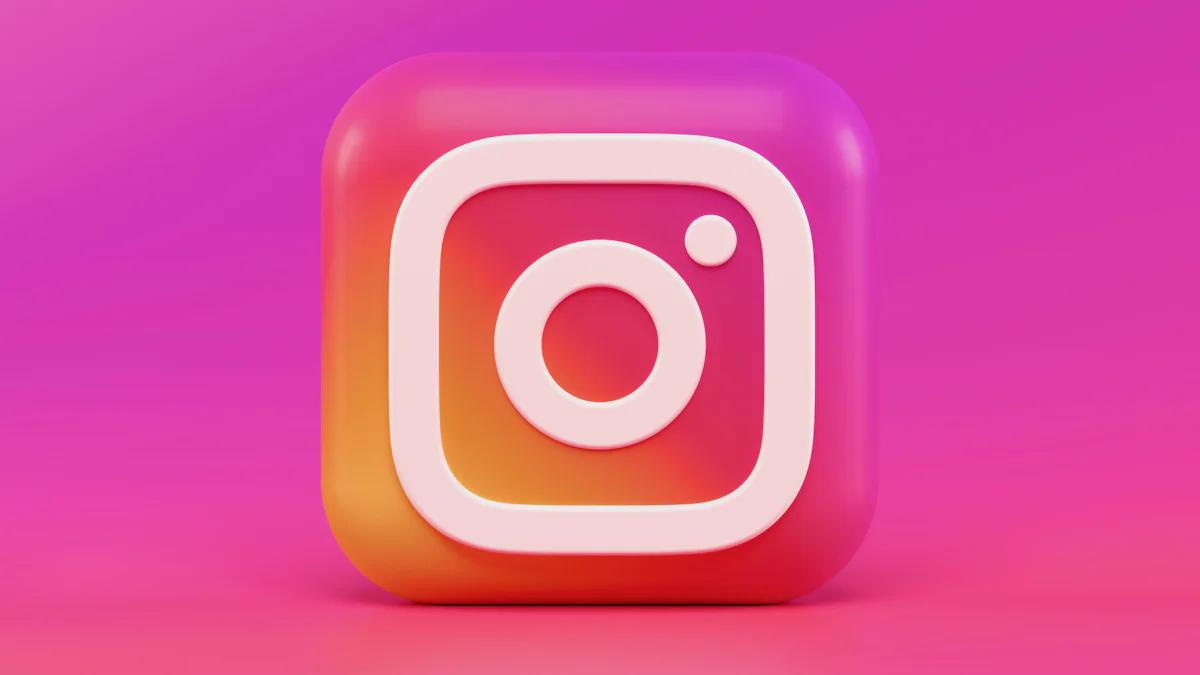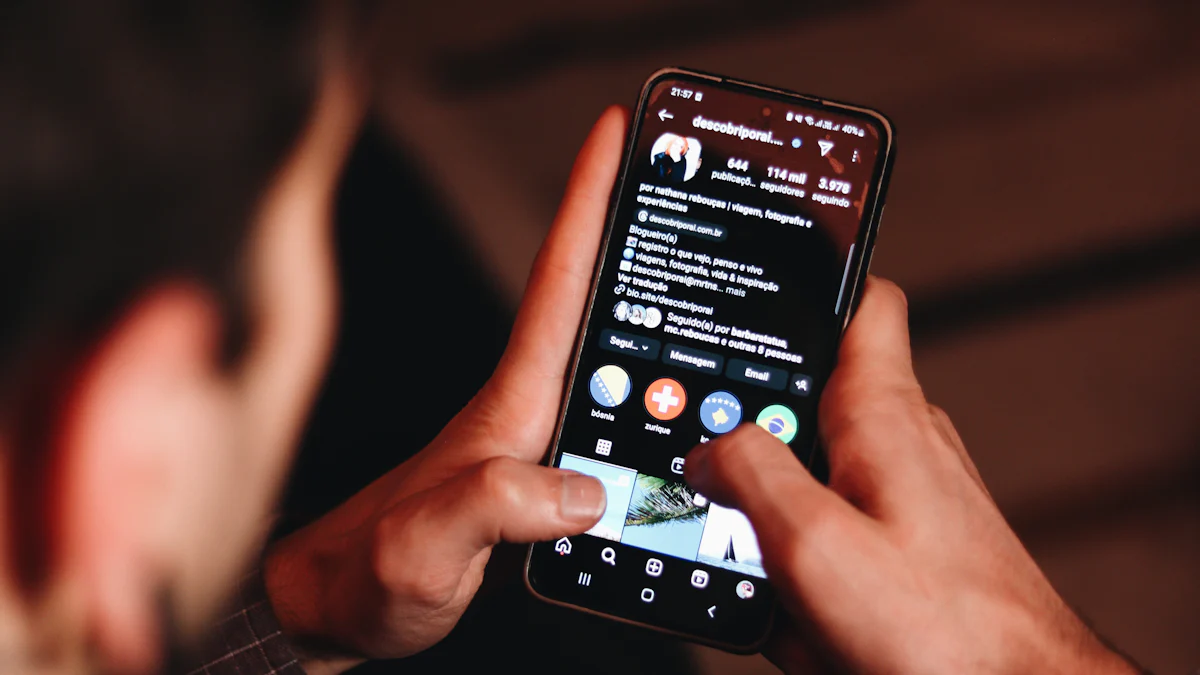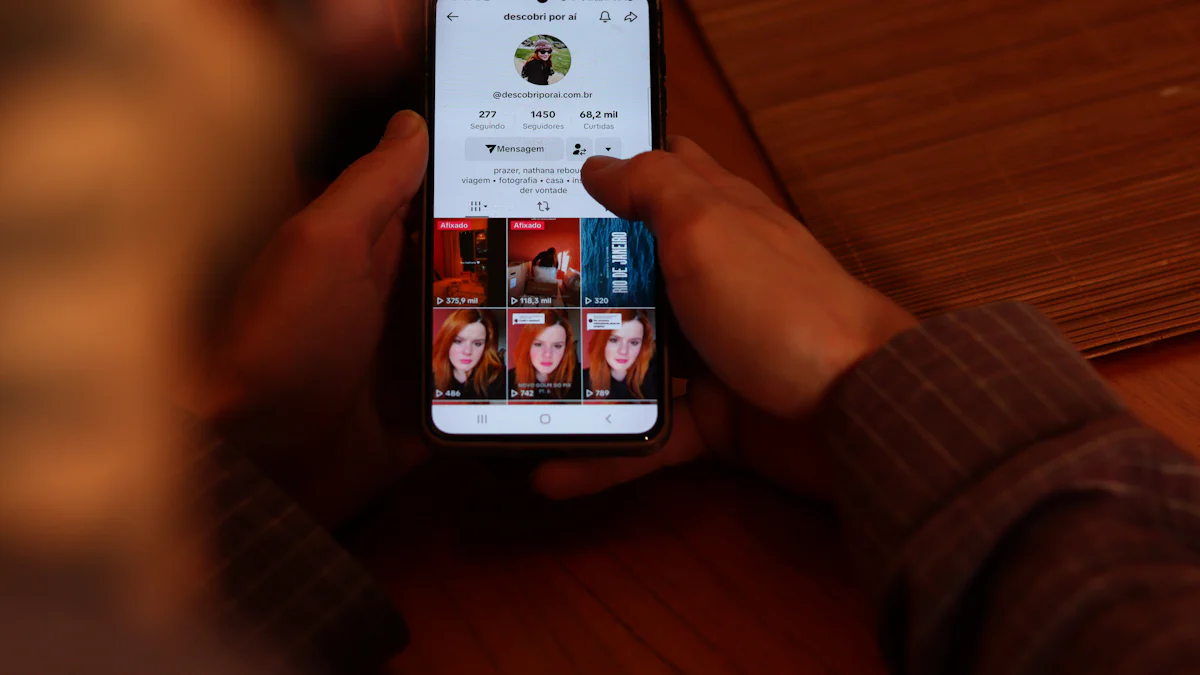Define influencer marketing with 2025 strategies

Have you ever wondered why influencer marketing is such a big deal today? By 2025, it’s expected to grow into a $22 billion industry, and for good reason. When you define influencer marketing, it’s all about leveraging trusted voices—whether they’re micro-influencers or big names—to connect with audiences in a way that feels personal and real. It’s no surprise that 69% of consumers trust product recommendations from influencers they follow.
But here’s the catch: the digital world is changing fast. To stay ahead, you need to adapt your strategies. Why? Because trust and engagement are everything. People want authenticity, and brands that collaborate with influencers can build credibility and reach niche audiences like never before. If you’re not evolving, you risk falling behind in this dynamic space.
Define influencer marketing in 2025
The evolution of influencer marketing
From celebrity endorsements to micro and nano influencers
In the early days, influencer marketing revolved around celebrities. Big names dominated campaigns, but things have shifted. By 2025, micro and nano influencers are leading the charge. Why? They offer something celebrities often can’t—authenticity. These smaller influencers connect with their audiences on a personal level, making their recommendations feel genuine.
Interestingly, brands have found that micro-influencer campaigns can be 6.7 times more efficient per engagement than those with larger influencers. Plus, they report up to 50% higher engagement rates. This focused approach delivers better ROI and builds trust. However, as social media becomes more saturated, some brands are revisiting larger influencers for broader visibility.
The rise of niche communities and authentic connections
Niche communities are thriving in 2025. People crave spaces where they feel understood, and influencers are tapping into this. Whether it’s a fitness guru sharing workout tips or a tech reviewer simplifying gadgets, these influencers foster authentic connections with their followers.
Take Marques Brownlee, for example. His detailed tech reviews help consumers make informed decisions. Or Alex (@FrenchGuyCooking), who inspires his audience with relatable cooking experiences. These influencers don’t just promote products—they shape lifestyles.
Why influencer marketing is essential in 2025
Trust and relatability as key drivers of consumer decisions
Trust is everything. By 2025, consumers are more skeptical of traditional ads. They turn to influencers who feel relatable. When you see someone you trust using a product, it feels more credible. This is why influencer marketing remains so powerful.
Long-term brand ambassadorships are also gaining traction. Instead of one-off campaigns, brands are building sustained relationships with influencers. This consistency reinforces trust and keeps messaging aligned.
The role of influencers in shaping purchasing behavior
Influencers don’t just recommend products—they drive decisions. Think about Taylor Swift influencing fashion trends or Joe Fitness motivating followers with his transformation stories. These influencers inspire action.
Small businesses are also leveraging micro-influencers for cost-effective marketing. Their focused reach and authentic voice make them invaluable. Whether it’s a niche product or a global brand, influencers are shaping what people buy and how they feel about it.
Identifying the right influencers

Finding the right influencer is like finding the perfect partner for your brand. It’s not just about numbers; it’s about alignment, authenticity, and understanding your audience.
Understanding your target audience
Demographics, interests, and online behavior
To connect with your audience, you need to know them inside out. Who are they? What do they care about? Start by analyzing their demographics, interests, and online behavior.
Here’s how you can do it:
- Interviews: Talk to your customers directly to uncover their preferences.
- Focus Groups: Gather small groups to discuss your products and get honest feedback.
- Quantitative Research: Use surveys and social media analytics to collect hard data.
You can also study your social media followers. Look at their age, location, and what they engage with most. This helps you tailor your influencer marketing strategies to match their needs.
Aligning influencer personas with brand values
Your influencer should feel like an extension of your brand. To ensure alignment:
- Define your brand’s core values and mission.
- Research influencers’ past collaborations and content themes.
- Check if their audience matches your target market.
For example, if your brand promotes sustainability, partner with influencers who share that passion. Consistency in messaging builds trust and strengthens your connection with your audience.
Types of influencers to prioritize
Micro and nano influencers for stronger engagement
Micro and nano influencers are the unsung heroes of influencer marketing. Their smaller, tight-knit communities make them relatable and trustworthy. They often achieve higher engagement rates, which means more meaningful interactions with their followers. If your goal is to target a specific niche, these influencers are your best bet.
Macro influencers for broader reach
If you’re aiming for visibility on a larger scale, macro influencers can help. They have a wider audience, making them ideal for brand awareness campaigns. While their engagement rates might not match micro influencers, their reach can amplify your message to a broader audience.
Tools for influencer discovery
AI-driven platforms for finding influencers
In 2025, AI is your secret weapon. Platforms powered by AI can help you find, vet, and manage influencers efficiently. These tools analyze data to match you with influencers who align with your brand and audience.
Social listening tools for trend analysis
Social listening tools are another game-changer. They track conversations and trends across platforms, helping you identify influencers who are already engaging with your target audience. This ensures your campaigns stay relevant and impactful.
Leveraging emerging platforms and trends

Exploring new social media platforms
Short-form video platforms and their impact
Short-form video platforms like TikTok and Byte are reshaping how you consume content. These platforms thrive on creativity and authenticity, making them perfect for influencer marketing. If your brand wants to connect with younger audiences, focus on creating engaging, bite-sized videos. Influencers on these platforms excel at storytelling in under a minute, which keeps viewers hooked.
Short-form videos also drive social commerce. Influencers can showcase products in action, making it easier for you to decide whether to buy. This trend is growing fast, so don’t miss out on the opportunity to experiment with this format.
The growing popularity of live-streaming platforms
Livestreaming is another trend you can’t ignore. Platforms like Clubhouse and Discord are gaining traction for real-time engagement. Influencers use livestreaming to host Q&A sessions, product launches, and even live shopping events. These interactions feel personal and build trust with audiences.
If you’re looking to create a sense of urgency, livestreaming is your go-to strategy. It’s perfect for limited-time offers or exclusive product drops. Plus, it allows influencers to connect with their followers in a way that feels authentic and immediate.
The role of AI and virtual influencers
How AI is transforming influencer marketing
AI is revolutionizing influencer marketing. It helps brands like Estée Lauder identify influencers who align with their target audience. This precision ensures your campaigns hit the mark. AI also analyzes trends, so you can stay ahead of the curve.
But that’s not all. AI-powered tools streamline influencer discovery and campaign management. They save you time and improve efficiency. However, remember that authenticity matters. While AI enhances personalization, it’s up to you to ensure your campaigns feel genuine.
The emergence of virtual influencers and their appeal
Virtual influencers are changing the game. These computer-generated characters, like Lu do Magalu, interact with audiences just like real influencers. They’re always on-brand and free from scandals, making them a safe choice for your campaigns.
Younger audiences, especially Gen Z, are embracing virtual influencers. They see them as innovative and engaging. If your brand wants to stand out, consider exploring this trend. Virtual influencers can create content 24/7, giving you a consistent presence on social media.
Integrating influencers into omnichannel strategies
Combining social media with email and e-commerce
Influencers aren’t just for social media. You can integrate them into your broader marketing strategies. For example, combine influencer campaigns with email marketing to drive traffic to your e-commerce store. Influencers can share exclusive discount codes, encouraging their followers to shop directly from your site.
Social commerce is booming, and influencers play a key role in this trend. They bridge the gap between discovery and purchase, making the customer journey seamless.
Using influencers in experiential marketing campaigns
Experiential marketing is all about creating memorable experiences. Influencers can amplify these campaigns by sharing them with their followers. Whether it’s a pop-up event or a virtual reality experience, influencers add a personal touch that resonates with audiences.
Treat influencers as an extension of your brand. They’re not just promoting products; they’re creating additional touchpoints for your customers. This approach enhances engagement and builds stronger connections.
Creating authentic and engaging content
The importance of storytelling
Crafting narratives that resonate with audiences
Storytelling is a powerful way to connect with your audience. It creates emotional bonds that stick. When influencers share stories that align with your brand, it feels personal and relatable. This approach fosters loyalty and inspires action. For example:
- Stories make your brand more human and approachable.
- They help audiences see how your product fits into their lives.
- Engaging narratives encourage followers to trust and engage with your brand.
When influencers weave your brand into their stories, it boosts authenticity. Their followers see these stories as genuine, which strengthens trust and loyalty.
Encouraging influencers to share personal experiences
Encourage influencers to share their own experiences with your product. Personal stories feel real and relatable. For instance, an influencer sharing how your skincare product improved their routine can resonate deeply with their audience. This authenticity builds credibility and makes your brand memorable.
Co-creating content with influencers
Collaborating on product launches and campaigns
Co-creating content with influencers is a win-win. You get access to their creativity and audience, while they get to showcase something new. Joint promotions amplify your reach and make campaigns more engaging. For example, when you launch a product, involve influencers in the process. Let them share behind-the-scenes content or exclusive previews. This collaboration feels genuine and excites their followers.
Allowing creative freedom for authenticity
Trust your influencers to know their audience. Give them the freedom to create content in their own style. This ensures the message feels natural and not forced. Authenticity drives better engagement, so let them take the lead while staying aligned with your brand’s goals.
Prioritizing user-generated content
Encouraging followers to share their experiences
User-generated content (UGC) is gold. Ask your followers to share their experiences with your product. You can run contests or create hashtags to encourage participation. UGC adds a layer of authenticity because it comes directly from real users.
Amplifying UGC through influencer partnerships
Influencers can help you amplify UGC. They can share their followers’ content or highlight the best submissions. This collaboration expands your reach and makes your audience feel valued. Plus, UGC combined with influencer promotion feels genuine, which boosts engagement and trust.
Measuring success in influencer marketing
How do you know if your influencer campaigns are working? Measuring success is all about tracking the right metrics, using the best tools, and learning from past efforts. Let’s break it down.
Key performance indicators (KPIs) to track
Engagement rates, reach, and impressions
Engagement rates are your go-to metric for understanding how well your content connects with audiences. They measure likes, comments, shares, and other interactions. High engagement rates mean your message is resonating. Reach and impressions, on the other hand, show how many people saw your content. These metrics are essential for gauging visibility.
Conversion rates and ROI
Conversions tell you if your campaign is driving action. Whether it’s sales, sign-ups, or downloads, tracking conversions helps you see the direct impact of your efforts. ROI (return on investment) ties it all together. It compares the cost of your campaign to the revenue it generates, giving you a clear picture of its effectiveness.
Here’s a quick look at key KPIs:
| KPI | Description |
|---|---|
| Reach and Impressions | How many people saw your content. |
| Earned Media Value (EMV) | Assigns advertising value to influencer-generated coverage. |
| Engagement | Measures interactions like likes, comments, and shares. |
| Conversions | Tracks direct actions like sales or sign-ups. |
| Brand Sentiment | Assesses public perception of your brand. |
Tools for tracking and analytics
Social media analytics platforms
You’ve got plenty of tools to help track performance. Platforms like Sprout Social and Meltwater offer dashboards that show metrics like reach, impressions, and engagement. They make it easy to see what’s working.
Custom tracking links and promo codes
Custom links and promo codes are simple yet powerful tools. They let you track exactly where your traffic or sales are coming from. For example, if an influencer shares a unique code, you can directly measure how many conversions they drive.
Iterating and optimizing campaigns
Learning from past campaigns
Every campaign teaches you something. Look at what worked and what didn’t. Did certain types of content get more engagement? Which influencers had the biggest impact? Use this data to refine your strategies.
Adapting strategies based on data insights
Data-driven influencer marketing is the future. By analyzing past performance, you can identify trends and adjust your approach. Focus on influencers who deliver results and content that resonates. This way, you’ll keep improving with every campaign.
Pro Tip: Don’t just track numbers—understand the story behind them. Metrics like engagement rates and conversions tell you what your audience loves. Use this insight to create campaigns that truly connect.
Adapting your influencer marketing strategies for 2025 isn’t just smart—it’s essential. The digital landscape is evolving, and staying ahead means embracing change. Focus on identifying influencers who align with your brand, leveraging emerging platforms, and creating content that feels real and relatable. Don’t forget to measure success with the right tools and metrics.
Here’s a quick recap of what you should prioritize:
| Key Takeaway |
|---|
| Advanced platforms will help brands monitor influencer performance. |
| Analytics tools will assist in selecting influencers aligned with target markets. |
| Niche influencers will offer more targeted audience reach. |
| Long-term partnerships will become a key trend. |
| Small businesses can effectively compete using influencer marketing. |
| Influencer marketing will be essential for brand crisis management. |
| The creator economy is expanding, with influencers diversifying content. |
| Authentic and engaging user-generated content is crucial. |
| Influencers who remain true to their voice will connect better with audiences. |
| Video content will be vital for engagement and audience connection. |
Data-driven decision-making is your secret weapon. It helps you understand your audience, pick the right influencers, and optimize campaigns for better results. By analyzing trends and audience behavior, you’ll create partnerships that feel authentic and deliver real impact.
So, are you ready to innovate and lead the way in 2025? The future of influencer marketing is yours to shape.
FAQ
What is the difference between micro and nano influencers?
Micro influencers typically have 10,000–100,000 followers, while nano influencers have fewer than 10,000. Nano influencers often have closer relationships with their audience, making them great for niche campaigns. Micro influencers, on the other hand, balance reach and engagement effectively.
How do I measure the ROI of an influencer campaign?
Track metrics like conversions, sales, and website traffic. Use tools like custom promo codes or tracking links to see how much revenue the campaign generates. Compare this to your campaign costs to calculate ROI.
Pro Tip: Focus on both monetary and non-monetary returns, like brand awareness.
Are virtual influencers better than real influencers?
It depends on your goals. Virtual influencers are consistent and scandal-free, but they lack human relatability. Real influencers bring authenticity and emotional connections. Choose based on what resonates with your audience.
How do I find influencers who align with my brand?
Use AI-driven platforms or social listening tools to identify influencers who share your values. Check their content, audience demographics, and past collaborations to ensure alignment.
Can small businesses benefit from influencer marketing?
Absolutely! Partnering with nano or micro influencers is cost-effective and helps you reach targeted audiences. Their authentic voice can build trust and drive engagement, even on a smaller budget.
Note: Start small and scale as you see results.
See Also
Key Influencer Marketing Trends You Should Follow in 2024
Effective TikTok Influencer Marketing Techniques for 2024
15 Essential Influencer Marketing Platforms for Your 2024 Strategy
Seven Essential Steps for Crafting a Winning Influencer Strategy
Practical Influencer Marketing Data for Enhanced Strategic Decisions

